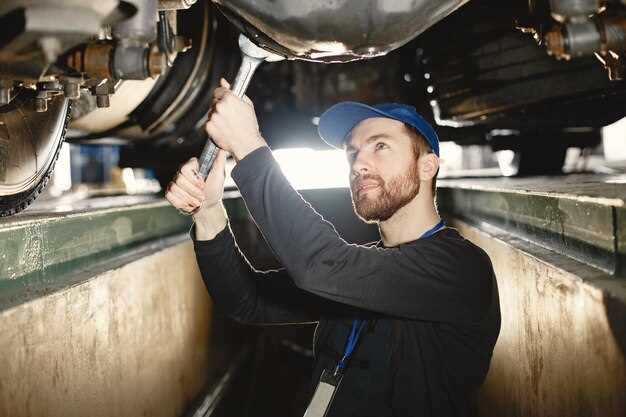
Your vehicle’s exhaust system plays a crucial role in ensuring efficient engine performance and maintaining environmental standards. When this system starts to malfunction, it can lead to a range of issues that not only affect your car’s efficiency but also pose safety risks. Recognizing the signs that your exhaust system needs immediate repair is essential for preventing further damage and ensuring optimal performance.
One of the earliest indicators of exhaust system failure is the presence of unusual noises. If you notice loud rumbling or hissing sounds, it may signify a leak in the exhaust or a worn-out muffler. These noises often indicate that harmful gases are escaping before they can be properly filtered, which can lead to serious consequences for both you and your passengers.
Another significant sign of exhaust system problems is the appearance of warning lights on your dashboard. A check engine light or an illuminated emissions warning can indicate a malfunction within the exhaust system that requires prompt attention. Ignoring these alerts can result in more extensive damage and costly repairs down the line.
Finally, be alert for changes in your vehicle’s performance, such as decreased fuel efficiency or difficulty accelerating. These symptoms may suggest that your exhaust system is not effectively expelling gases, causing your engine to work harder. Addressing these issues early can save you time and money while ensuring your vehicle remains safe and efficient on the road.
Unusual Noises Indicating Exhaust Issues
Identifying unusual noises from your vehicle’s exhaust system is crucial for early diagnosis and repair. Different sounds can indicate specific problems, helping you address issues before they escalate. Here are some common noises to listen for and their potential causes:
| Noise Type | Description | Possible Causes |
|---|---|---|
| Rattling | A loose component clattering against another part. | Loose heat shield, catalytic converter, or exhaust pipe. |
| Hissing | A persistent sound resembling air escaping. | Leaks in the exhaust system, often around gaskets or joints. |
| Popping | A sudden, loud sound resembling a pop or bang. | Unburned fuel igniting in the exhaust system or a malfunctioning catalytic converter. |
| Deep rumble | A lower-than-normal sound that may be noticeably louder. | Worn-out muffler or exhaust leaks. |
| Chirping or squealing | A higher-pitched sound that resembles a bird chirping. | A failing exhaust gasket or a loose heat shield. |
Listening closely to the sounds your vehicle makes can provide valuable insights into the condition of your exhaust system. If you notice any of these noises, it’s advisable to have your vehicle inspected by a qualified mechanic to prevent further damage.
Visible Rust or Damage on Exhaust Components
Inspecting your exhaust system regularly is crucial for maintaining vehicle performance and safety. One of the most obvious indicators that your exhaust system requires immediate attention is the presence of visible rust or damage on its components. Ignoring these signs can lead to more severe issues that may impact your vehicle’s efficiency and your driving experience.
Here’s what to look for and why they matter:
- Surface Rust: Rust can form on the surface of exhaust pipes and mufflers due to exposure to moisture and road salt. While minor surface rust may not pose a significant threat, it can gradually deepen and compromise the material integrity.
- Severe Rust Pitting: If you notice deep pits or holes in the metal, this indicates advanced rusting. Such damage can lead to exhaust leaks, which may increase noise levels, decrease fuel efficiency, and permit harmful fumes to enter the cabin.
- Crumpled or Bent Components: Dents or bends in exhaust pipes can restrict airflow and affect engine performance. If any part of your exhaust shows signs of physical damage, it is essential to have it evaluated.
- Corroded Hangers and Supports: The hangers and brackets that support the exhaust system can also rust. If these components fail, it can lead to misalignment and increased vibration, exacerbating other issues.
- Visual Cracks: Cracks in the exhaust manifold or any other component can result in leaks. This not only reduces performance but also poses a risk of exhaust gas buildup, which can be harmful.
Addressing visible rust or damage promptly is vital. Not only does it ensure the safe operation of your vehicle, but it also prevents the cost of more extensive repairs down the line. Regular maintenance and timely repairs are essential to prolonging the lifespan of your exhaust system.
Increased Engine Vibrations While Driving
One significant indicator that your exhaust system may require urgent attention is the presence of increased engine vibrations while driving. These vibrations often stem from a malfunctioning exhaust system, which could include issues such as a damaged exhaust manifold, loose connections, or a failing catalytic converter.
When the exhaust system is compromised, it can affect the overall performance of the engine. Faulty components may lead to uneven exhaust flow, causing the engine to work harder than necessary. This increased workload can result in noticeable vibrations that resonate throughout the vehicle, especially at idle or during acceleration.
Additionally, increased vibrations can indicate that your exhaust system is poorly aligned or that there is a significant leak. Such leaks can disrupt the backpressure needed for efficient engine operation, causing instability in engine performance. If left unaddressed, these vibrations can escalate into more severe mechanical issues and contribute to long-term damage to engine components.
It is crucial to address any unusual vibrations promptly. Ignoring these signs may lead to further complications, increased repair costs, and potentially unsafe driving conditions. If you experience heightened engine vibrations, a thorough inspection of your exhaust system should be prioritized to identify and rectify the underlying problem.
Exhaust Fumes Entering the Cabin
One of the most alarming signs that your vehicle’s exhaust system requires immediate attention is the presence of exhaust fumes entering the cabin. This issue can pose serious health risks to both the driver and passengers, as exhaust fumes contain harmful components such as carbon monoxide, which is odorless and can lead to severe health complications, including unconsciousness or even death with prolonged exposure.
If you start to notice an unusual smell, particularly a strong metallic or burning odor inside the vehicle, it is crucial to investigate the source. The infiltration of exhaust fumes can occur due to leaks or cracks in the exhaust manifold, gaskets, or pipes, which may have developed over time due to corrosion, heat fatigue, or physical damage.
Additionally, a malfunctioning catalytic converter can fail to properly filter exhaust gases, leading to increased concentrations of harmful emissions entering the vehicle. Checking for visible signs, such as soot or residue around exhaust components, can help determine if there is a leak. In some cases, a decrease in engine performance or an increase in fuel consumption can also be indicators of exhaust system problems.
Addressing exhaust fumes entering the cabin should be treated as a priority. It is advisable to seek a professional inspection immediately to diagnose the precise cause and implement necessary repairs. Ignoring this problem not only jeopardizes your health but can also lead to further damage to the vehicle’s exhaust system and potentially result in costly repairs down the line.
Decrease in Fuel Efficiency and Power
A significant drop in fuel efficiency and engine power is often a clear indication that your exhaust system requires immediate attention. When the exhaust system malfunctions, it can lead to improper engine back pressure, causing the engine to work harder than necessary. This strain results in decreased fuel economy and a noticeable lack of power during acceleration.
One of the primary components that can affect fuel efficiency is the catalytic converter. If it becomes clogged or damaged, it restricts the flow of exhaust gases. This condition not only increases emissions but also hinders engine performance, ultimately leading to higher fuel consumption. Similarly, if there are leaks in the exhaust system, the engine may not receive the right amount of oxygen for efficient combustion, further decreasing power and fuel efficiency.
When experiencing these symptoms, it’s crucial to have your exhaust system inspected as soon as possible. Ignoring the warning signs can result in additional damage to the engine, leading to costlier repairs down the line. Regular maintenance of the exhaust system ensures optimal performance and can help you avoid issues related to fuel efficiency and power loss.
Check Engine Light Related to Exhaust Problems

The Check Engine Light (CEL) is a crucial indicator of various issues within a vehicle, including potential problems with the exhaust system. When this warning light activates, it signifies that the onboard diagnostic system has detected an anomaly that requires attention. Ignoring the CEL can lead to more severe issues and expensive repairs.
One common reason for the CEL to illuminate in relation to exhaust issues is a malfunctioning oxygen sensor. The oxygen sensor monitors the levels of unburned oxygen in the exhaust gases, providing essential data for optimizing fuel efficiency and reducing emissions. A faulty sensor can disrupt this balance, leading to poor engine performance and an increase in harmful emissions.
Another crucial component linked to the CEL is the catalytic converter. This device is responsible for converting harmful exhaust gases into less toxic emissions. If the catalytic converter becomes clogged or damaged, it can trigger the Check Engine Light. Symptoms may include decreased engine power, unusual noises from the exhaust, or a noticeable increase in fuel consumption.
Additionally, issues with exhaust leaks can also cause the CEL to illuminate. Leaks can result in improper exhaust flow, leading to increased pressure in the engine and potential damage over time. Moreover, exhaust leaks can cause harmful gases to enter the cabin of the vehicle, posing health risks to occupants.
If the Check Engine Light activates, it is crucial to have the vehicle diagnosed as soon as possible. Utilizing an OBD-II scanner can help determine the specific trouble codes associated with the light, allowing for targeted repairs. Addressing exhaust-related issues promptly not only ensures vehicle performance but also contributes to meeting emissions regulations and enhancing overall safety.















